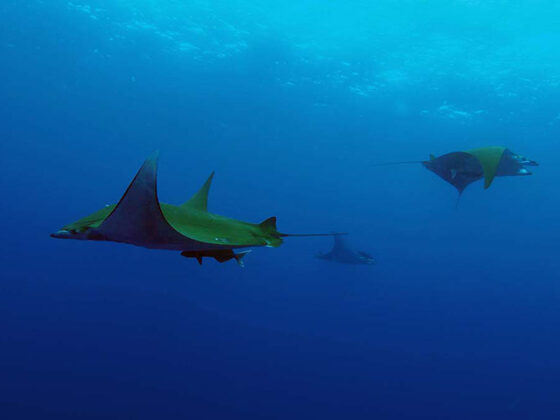


The largest sicklefin devil ray ever observed was a female with a wing span of 370 cm, more commonly females are 270 cm and males are around 250 cm. They are over a metre wide even when they are born. These rays reproduce slowly, the females having just one pup at a time and possibly pausing for up to three years between pregnancies.

Populations of the rays have been declining and they are now endangered. Together with their slow reproductive rate, the main reasons for their decline is that their gill plates are prized in Asia

The rays range around the world, in temperate to tropical ocean waters. Although the Sicklefin devil ray is highly migratory their migration patterns are still unknown to us but they can travel great distances. The Azores, however, is one of the few places that the endangered sicklefin devil rays are known to congregate. Another is the Saint Peter and Saint Paul Archipelago, again way out in the Atlantic.
One of the best places to see sicklefin devil rays is in the Azores, either via day boats from the shore or by Azores liveaboard.
References
Sibele Alves de Mendonca et al Dancing with the devil: courtship behaviour, mating evidences and population structure of the Mobula tarapacana (Myliobatiformes: Mobulidae) in a remote archipelago in the Equatorial Mid-Atlantic Ocean. 2020.
Sicklefin Devil Ray, IUCN Red List, 2018.
Devil rays and mantas: Interview with marine scientist Ana Filipa Sobral